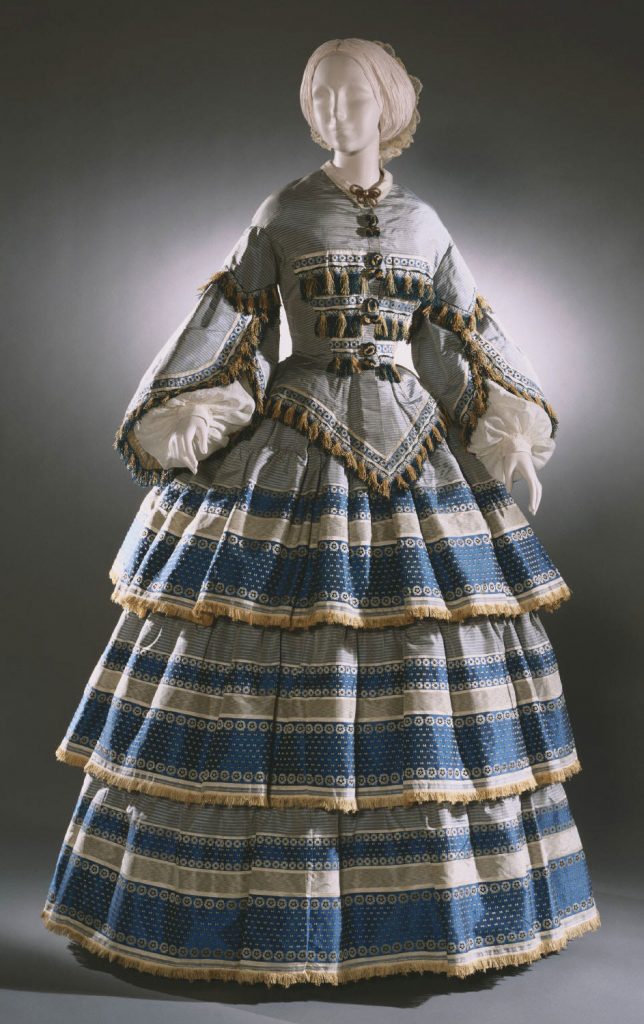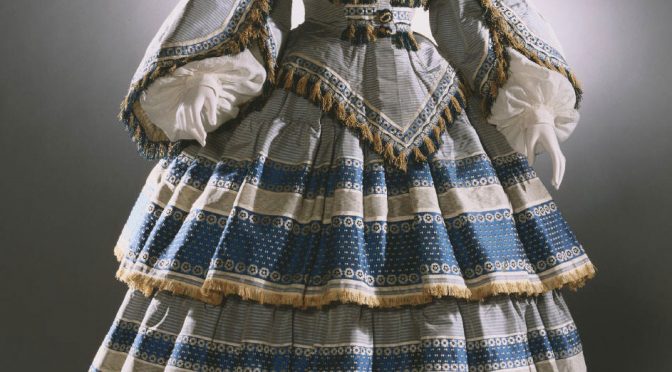I have alerts set in Google News to notify me about stories related to the Basques. Every once in a while, I get seemingly off-topic headlines such as “Rihanna poses in black basque and stockings” or “Vanessa Hudgens puts on a busty display in a vampish lace basque.” Of course, these articles have nothing to do with the Basque people or their culture, but it can’t be coincidence that the basque is called, well, a basque, can it?

- The first use of the word ‘basque‘ for an article of clothing comes from the mid 1800s. At the time, it was common for dresses to be made in two pieces, a skirt and a bodice. Taken from French, the term ‘basque’ originally referred to a bodice that extended past the waist and around the hips.
- This fashion was inspired by the traditional dress of women in the Basque Country. Exactly how it made its way in to French fashion isn’t clear, at least to me. I couldn’t really find anything about this transition beyond “it happened.”
- The unique silhouette of the traditional basque has also inspired the ‘basque waist,’ usually seen in formal wear or wedding dresses. This style of dress has the waist extend below the actual waist of the body, forming a ‘V’ or ‘U’ shape.
- A ‘coat-basque‘ took the concept a bit farther, with longer tails, almost like a men’s frock. These were particularly popular in the late 1800s.
- Today, at least in the English-speaking world, the term basque refers more specifically to a type of lingerie, one in which the brasserie extends across the stomach and to the waist or even the hips. In many cases, a basque is tight-fitting, meant to accentuate the curves of the body like a corset, but typically without the rigid boning. In France, basque still refers to the original bodice or jacket inspired by the Basques.
- The traditional basque is essentially a type of overskirt and it can, at least in some contexts, also be called a peplum. I have to admit, trying to learn the difference between various items of clothing, it is amazing to me all of the terminology and distinctions that are associated with clothing. I never realized how complex the topic was. I’m sure I’ve messed up something here…
Primary source: Wikipedia; Philadelphia Museum of Art.



Agur agur Buber,
I’ve read about the subject of homonyms in the English language from borrowed words from other languages, particularly Euskara (, don’t even get me started on the word chalupa 😈) .
Anyway in the related topic of your article there’s is the analogue case of the passé Basque dance move that eventually evolved into a classical French ballet dance movement ( don’t know if is plier, relever ,sauter, don’t know ballet myself ) from the Basque dancers that the Franco-Scottish Stewart dynasties often kept at court as palace entertainment ( I suppose to say) .
So I’d say maybe basque, the clothing article , could have equally evolve from a garment that Basque women may have used ( let’s never forget how avant-garde fashionistas exotic basques hace been reported of being 😈❤️)
In my humble opinion a case for a Basque differential stamp, or berezitasuna, (singularity) can be made, but not just on our greatest treasure the living Euskara. But as with any other languages mold the way of understanding live of its speakers it also creates, mode, behavior, and thus aesthetic in its aristocracy expression, intellectual though and ultimately its culture, I choose to believe that there’s no coincidence in the basque dressing component and its human family homonym.
Exactly the same way as within so many others
Eskerrik asko eta agur